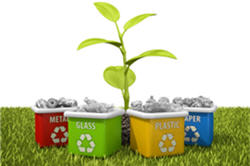When one tiny circuit within an integrated chip cracks or fails, the whole chip – or even the whole device – is a loss. But what if it could fix itself, and fix itself so fast that the user never knew there was a problem?
Earlier this year the federal government introduced sector-by-sector emissions reduction regulations as its stand on climate change. However, according to Prof. Al Lucas and co-author Jenette Yearsley, the Constitution limits Ottawa's ability to enact climate change legislation limiting greenhouse gas emissions.
The Polytechnic University of Puerto Rico will install pollution-reduction technology on 72 heavy-duty trucks and replace 10 old heavy-duty trucks with 2010 or newer less polluting models.
The team at U.K.-based Glow-worm, has put together an eco-friendly holiday guide to help us all achieve a low carbon Christmas. Bursting at the seams with facts, figures and energy saving tips for 25 days of December.
Emergency campaign calls for immediate action from the private sector to reduce their carbon footprint while supporting innovative forest protection projects.

Engineering researchers at the University of Arkansas are developing an anti-icing system that could make airport runways safer and less expensive to maintain during winter months.
Technology with the ability to detect more than 1,000 colors, the hyperspectral camera is being used to diagnose contaminants and other environmental hazards in real time.

If you haven’t taken the initiative to recycle – today’s the day to start with Nov. 15 being America Recycles Day (ARD) and all.
Knowing that natural and organic grocery consumers expect the stores they patronize to maintain sustainable operations, Market of Choice continues growing a green operation that's second to none in the supermarket industry.
Plain, sloping roofs can collect up to 50 percent more rainwater than flat roofs with gravel.
Scientists are reporting that household washing machines seem to be a major source of so-called "microplastic" pollution that they now have detected on ocean shorelines worldwide.
It is becoming more and more common to install solar panels on roofs in order to obtain green electricity, but not all roofs are equally suitable.

While the United States has not yet seen national legislation aimed at reducing corporate carbon footprints and promoting sustainability, state and local governments across the country have begun to take bold steps in their effort to protect the environment.
Sanborn Regional School District in Kingston, N.H., has signed the world's first power purchase agreement for ultra-efficient solar hot air, which will reduce heating bills.
Siluria is the first and only company to develop an economically advantageous, methane-based alternative for producing fuels and chemicals normally derived from oil.
NASA has awarded the largest prize in aviation history, created to inspire the development of more fuel-efficient aircraft and spark the start of a new electric airplane industry.
The school from College Park, Maryland competed against 18 other collegiate teams to build an aesthetically pleasing, architecturally innovative and well-engineered energy efficient living space that generates its energy from solar power
Electrical energy storage and its management is becoming an urgent issue due to climate change and energy shortage.
The U.S. Environmental Protection Agency (EPA) recently announced plans to help an estimated 125 local, state, and tribal governments create more housing choices, make transportation more efficient and reliable and support vibrant and healthy neighborhoods that attract businesses.
A team of Purdue University researchers has invented a prototype water-disinfection system that could help the world's 800 million people who lack safe drinking water.